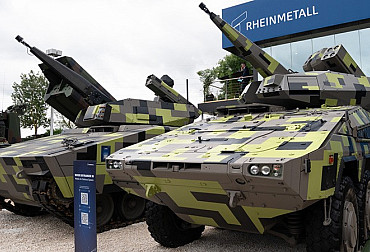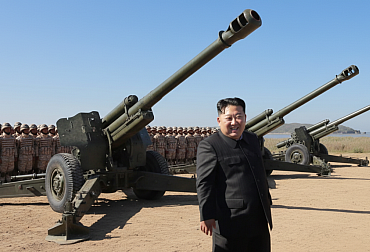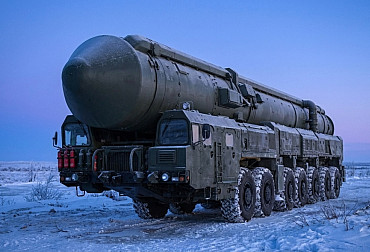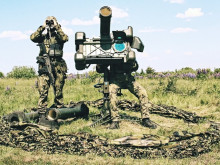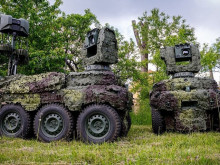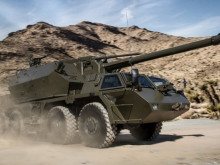Which equipment for the Airborne Regiment - Light Armored Vehicles or Light Strike Vehicles?
The Czech Army has been building an Airborne Regiment on the basis of the former Chrudim Airborne Battalion for some months now. In connection with this, there is a need to acquire a larger number of Light Strike Vehicles, also abbreviated as LSVs. The Chrudim battalion was armed with LR Defender Cayman Light Strike Vehicles, which were taken over by the new regiment. However, the Caymans are already reaching the end of their service life and the regiment will need more Light Strike Vehicles than the airborne battalion had.
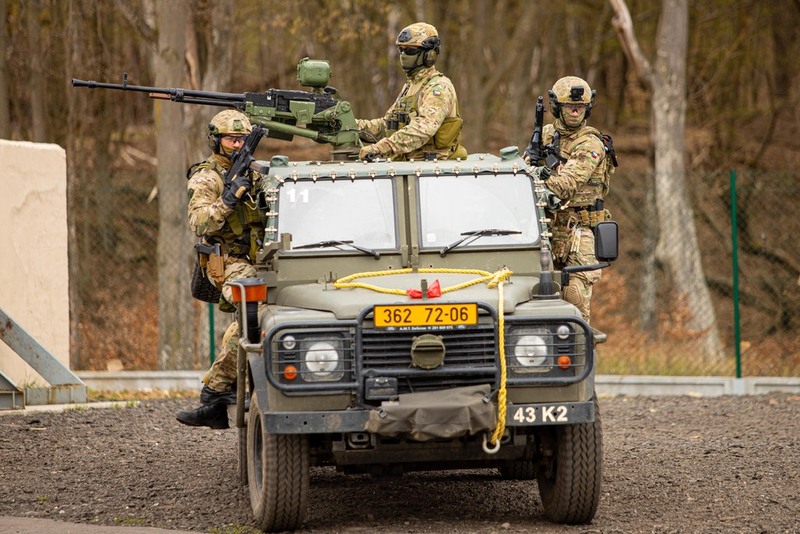 Picture: The need for new LSVs for the Airborne Regiment is unquestionable, the LR Defender Cayman (and the LR Defender Cowboy used by special forces) are old machines that have served their time. | 43rd Airborne Regiment
Picture: The need for new LSVs for the Airborne Regiment is unquestionable, the LR Defender Cayman (and the LR Defender Cowboy used by special forces) are old machines that have served their time. | 43rd Airborne Regiment
For the Army command, equipping the Airborne Regiment as the third maneuver element appears to have become a high priority. This is despite the fact that the rearmament of the armoured mechanised forces (IFVs, tanks) is far from complete. However, the need for new LSVs for the Airborne Regiment is unquestionable, LR Defender Cayman (and LR Defender Cowboy used by special forces) are old vehicles that have served their time.
The need for new vehicles was confirmed by the commander of the 43rd Airborne Regiment, Colonel Róbert Dziak: "The Land Rover Defender 130 Kajman vehicles are reaching the end of their service life. Their replacement is necessary for the development of our capabilities, especially in light infantry operations using vehicles. These operations can take place in or outside the Czech Republic. We trust the Airborne Troops and Airborne and Rescue Services Division of the Force Development Section of the Ministry of Defence to determine the specific specification of the vehicles. Vehicles that will replace our current fleet in the future will be acquired through the Armament and Acquisition Section of the Ministry of Defence."
Logically, the Army would be looking around for an equivalent successor that would be suitable for aeromobile operations, the primary purpose of airborne forces, while delivering greater combat value, better crew protection and improved performance. The selection of the vehicle should certainly take into account the capabilities of the Czech Air Force and the capabilities of its helicopter and airborne equipment, which it has at its disposal, as the Airborne Regiment will be working primarily with it. Allied air equipment, which is common among NATO troops, should also be taken into account, as we cannot rely on special machines such as heavy helicopters or large transport aircraft, which are in short supply in Europe.
According to the various information available, which has appeared in the specialist media as well as in the Ministry of Defence's marketing research brief, it seems that the army wants to acquire vehicles for the Airborne Regiment that weigh up to 9.5 tonnes, which is quite surprising, since this weight category is mainly used for LAVs (light armoured vehicles) and not for LSVs (Light Strike Vehicles). To illustrate, the Cayman weighs around 4 tonnes, less than half of the 9.5 tonne figure quoted. It should also be mentioned that the Czech army already has dozens of Iveco LMV armoured vehicles in its arsenal, which fall precisely into the light armoured vehicle category. It is not for nothing that the Iveco LMV bears the Czech military designation LOV 50, and its maximum operating weight is between 7 and 8 tonnes.
It seems, therefore, that the Army wants to demand vehicles heavier than the LOV 50 type used by ground mechanised units for Airborne Regiments and aeromobile operations. In other words, the Army already has a proven LAV category vehicle, but it wants to buy other vehicles in the same category of a different type, which may be heavier, even though they are to serve as the main combat type for the airborne troops. The aeromobile flexibility of the equipment used is always a priority for airborne forces. This fact, after all, played a significant role in the cancellation of the purchase of Supacat Jackal vehicles for the 601st SFG 10 years ago. At that time, the Ministry of Defence, headed by Alexandr Vondra, refused to purchase 3 units of this British type for 99 million crowns on the grounds that they were not suitable for aeromobile operations due to their design and weight. It was already clear to the ministry at that time that special forces and airborne troops must have light strike vehicles with powerful armament, not light armoured vehicles.
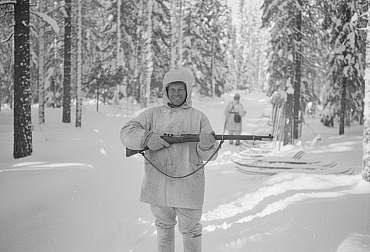
The fact is that, for example, the aforementioned Supacat Jackal, as well as machines such as Zetor Gerlach, Oshkosh JLTV and others, which were presented at this year's IDET as potential successors to the Caymans of the Czech paratroopers, are not LSVs and were not designed as such. The above mentioned vehicles are heavy and bulky for the role of LSVs in the Czech armed forces. The Czech Air Force currently has CASA C-295M/MW transport aircraft, which simply cannot accommodate Light Armoured Vehicles.
The Air Force does not have and will not have bigger machines, as Colonel Jan Susekár, the Director of the Air Force Development Department of the Force Development Section of the Ministry of Defence, expressed in an interview for the Air Force Yearbook 2021 published in September. According to him, the Czech Army's Concept of Build-up does not include the acquisition of C-130 or C-390 transport aircraft. In the coming years, the Army will only participate in the international IMF programme, under which participants can use a certain number of flight hours of the joint fleet of A330MRTT aircraft. This is a type suitable for strategic transport and in-flight refuelling, but certainly not primarily intended for airborne operations. Moreover, the Army will not be able to use these aircraft at will.
In terms of helicopter equipment, the Army will soon get modern Bell UH-1Y and AH-1Z machines, which are being procured primarily as air support elements for the Airborne Regiment. Unfortunately, however, neither of them can be used to transport the combat vehicles of the Airborne Regiment. The AH-1Z combat aircraft does not have this capability at all, while the UH-1Y has an insufficient undercarriage capacity of 3 tonnes for this purpose. Thus, it is unable to carry even the existing fully equipped Caymans. The Air Force also has upgraded Mi-171ShMs, which are expected to be around for another 15 years. About half of the machines are equipped with high-end avionics and electronics, with the other half to be upgraded to the same standard in the coming years. These are reliable and powerful helicopters that will form the backbone of the Airborne Regiment's airlift. However, their payload capacity in the undercarriage reaches 4 tonnes, so even in this case the air force cannot serve to transport the combat vehicles of the Airborne Regiment, i.e. its basic combat tool, if the army acquires vehicles with a declared weight of 9.5 tonnes.
An Airborne Regiment needs truly lightweight vehicles capable of aeromobile deployment, yet not dependent on heavy aviation equipment. Only a few NATO countries have heavy CH-47 or CH-53 helicopters, and not in large numbers, and they use them for their own specific needs and will certainly not allocate them to the activities of the Airborne Regiment. The same is true of medium and heavy transport aircraft. NATO generally suffers from a lack of air transport capacity, so the Czech army will have to rely primarily on itself for the deployment and training of the Airborne Regiment. The LSV for the Airborne Regiment should therefore be a simple but robust vehicle with a basic weight of around 4 tonnes and sufficient ballistic protection for the crew, which could be easily and quickly retrofitted with the necessary armament, equipment and supplies for the crew at the deployment site. Such a vehicle with low acquisition and operating costs should be built on a proven platform suitable for operation on paved roads and in difficult terrain, with a sufficiently strong and reliable powertrain and readily available spare parts both domestically and for deployment abroad.
In this category, the Land Rover Defender, Mercedes G-Class and Toyota Land Cruiser/Hilux platforms are the most widely used worldwide. The first of these is no longer in production and is being replaced by other types, which is happening and will continue to happen in the case of the Czech Armed Forces. Let us mention that in the middle of last year the Czech Army signed a contract for the acquisition of five Enok 4.8 vehicles from the German company ACS on the Mercedes G platform for about CZK 50 million for the 601st Special Forces Group, where they will replace the Kovboj vehicles built on the LR Defender platform. The Enok 4.8, when fully equipped, weighs 4.8 tonnes, so it can be transported in the undercarriage under the Mi-171ShM. In this category, there is also the Czech-designed Gepard Light Strike Vehicle on a Toyota Land Cruiser chassis, which Dajbych and TDV have presented in two versions at IDET trade fairs and public events. Both are also transportable in a helicopter under the Mi-171ShM. At IDET 2017, the Czech-Slovak company Zetor Engineering presented and offers a similar vehicle, the Fox, also on a Mercedes G chassis, which, according to the presented parameters, is also transportable by the Mi-171ShM helicopter.
The choice of the Enok 4.8 type for the 601st SFG is absolutely logical, as this special unit is tasked with aeromobile operations and cooperates with the helicopter pilots of the Czech Armed Forces within the SOATU. The German Army has also acquired Enok 4.8 vehicles in dozens of units for its airborne units. The Bundeswehr is planning a complete renewal of wheeled equipment under the GFF program, with the equipment divided into 4 weight categories. For airborne troops this is the GFF 1 category up to 5.3 tonnes, for ground troops it is the GFF 2 category up to 7.5 tonnes, GFF 3 up to 12.5 tonnes and GFF 4 up to 25 tonnes. This is a logical division that the Czech Army could take inspiration from.
An important aspect in the acquisition of equipment is also the obligatory service and spare parts supply. It is always more advantageous for the army when domestic companies can provide the facilities. The service network is also important in terms of service and availability of spare parts. If it is extensive, as in the case of manufacturers with a global reach, such as Toyota or Mercedes-Benz, the army can choose the most advantageous offers for maintenance and repair on the domestic market, while local distribution of spare parts is ensured when deployed abroad. For example, the Gepard LSV uses 90 per cent standard Toyota components and any special modifications are also approved by the manufacturer. This is not an issue with special vehicles. Last but not least, of course, is the cost of acquisition. As already mentioned, according to the published contract, the army is to pay the supplier approximately CZK 50 million for 5 Enok 4.8 units, i.e. about CZK 10 million per unit. Between 2009 and 2015, the Czech army purchased 120 Iveco LMV/LOV 50 vehicles for almost CZK 4.3 billion, i.e. it paid almost CZK 36 million per unit. In 2011, the army planned to acquire 3 Supacat Jackal vehicles for CZK 99 million, or CZK 33 million apiece. As can be seen, light armoured vehicles can be up to three times more expensive than Light Strike Vehicles, and we are comparing prices over a period of about 10 years.
In connection with the above text, we asked the following 2 questions to the press department of the Ministry of Defence:
Statements by the Secretary of Defense and other Defense Department officials in recent weeks have emphasized the need to accelerate the rearmament of the military in several areas. Among other things, mention has been made of 150 Light Strike Vehicles (LSVs) for the Airborne Regiment. These are therefore replacements for the LR Defender Cayman vehicles, but is it possible to specify what kind of vehicles the army wants to replace the ageing Caymans with? Will it be the same or a similar category as the Cayman, i.e. open vehicles with a weight range of 4 to 7 tonnes that can be carried in light and medium transport aircraft such as C-297, C-27, C-130 or in tow under medium helicopters (i.e. generally lighter than, for example, the Iveco LMV/LOV 50 type introduced in the army), or will it be a heavier category than the LOV 50, i.e. 8 tonnes and above?
The rearmament of the Army continues according to the Concept of Build-up and the Land Forces Development Concept. Now, thanks to additional financial resources, the rearmament of the Army is actually accelerating. By 2024, we want to purchase military equipment beyond the original plans and accelerate modernisation projects worth more than CZK 48 billion in total. The purchase of Light Strike Vehicles is one of the projects not originally envisaged in the medium-term plans, but we will accelerate them in 2023 and 2024. 150 Light Strike Vehicles are actually to replace the LR Defender Cayman.
In what timeframe does the ministry plan to issue a tender for the LSVs and when does it expect to deliver them? After all, at a time when vehicle manufacturers are facing a general crisis in the automotive sector and therefore have to plan subcontracting well in advance and find it difficult to secure components, delivery times may be considerably prolonged.
The Ministry of Defence, as a contracting authority, must comply with the basic principles of public procurement set out in Act No 134/2016 Coll., on Public Procurement, as amended, when awarding public contracts. These principles also include the principle of equal treatment. Therefore, the Ministry cannot publish information about the specific technical specification of the LSV or the date of launching the procurement procedure before the actual launch of the procurement procedure. The Ministry is aware of the worldwide problems in the automotive sector and the related supply of individual components. This will be taken into account in the draft contractual terms of the forthcoming tender.
















